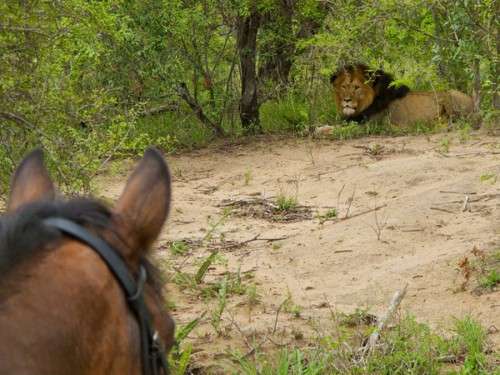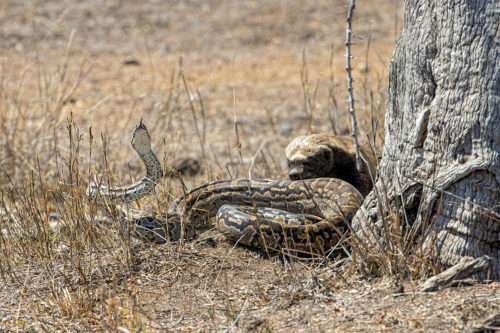Last spring I was interviewed by my former conservation photography student Cindy Liu (CL). The interview was published in the Summer 2017 issue of a Stanford student journal on science, technology, and society called Intersect, and it’s reprinted with permission here:
***
CL: You’re heavily involved in science and teaching as a neurobiology researcher and professor at Stanford, but you’ve also done a lot of work in wildlife photography and conservation. How did you become interested in these fields, and are there any ways in which they intersect?
SM: I’m sometimes asked, “What’s the relationship between being a developmental neurobiologist and a conservation photographer?” because they seem like really different ventures—and in many ways they are. But I see them as two trees that have grown out of the same root system. I love animals—I was an animal-crazy kid, and I’m an animal-crazy adult. When I was a kid, maybe 12 years old, I opened an issue of National Geographic magazine and saw a story about Jane Goodall, who was studying chimpanzees in Tanzania, focusing on their societies and their social interactions. I was fascinated by her studies of animal behavior, which were based on close observation, but I also formed a very romantic image of her life. There she was, a young woman living out in Africa alongside these amazing animals. This was the first time I had a vision of what life might be like as a scientist. Also, growing up in Indiana, I had never imagined living in such an exotic place. Seeing that National Geographic article formed the root system for my later interests.
In college, as a biology major studying animal physiology and behavior, most work at that time in naturally occurring animal behavior was purely observational. I realized that as much as I love watching animals, I wasn’t as intellectually engaged as I am when doing experiments. I gradually became more and more sort of reductionist in my thinking and started to focus on the underlying basis of animal behavior—which of course is the nervous system! I’ve always been interested in behaviors that are innate, which happen without any kind of a learning, versus behaviors that have to be taught and learned. The differences between the two have to reflect their underlying neural circuits and differences in developmental changes. As I got more and more involved in wondering about circuit formation, I started to think about nerve cells. How did they know what connections to form? Do they just know that innately, or does some other cell tell them? So actually, my scientific questions were a replica at the cellular level of the questions that I’d been asking about animals and behavior. In essence, that’s how I became a developmental neurobiologist. Over time, our approaches became more and more molecular as we were able to use genetic methods to ask questions about neuronal cell fates.
So that’s one tree that grew out of the root system that I’d developed as a kid. The other tree is still closely tied to the part that loves to watch animals. As I was starting to get enough self-confidence to travel to faraway places, (and also enough money—I wasn’t able to afford it for a very long time), I had always felt torn between just watching and observing animals very closely and being fully present in that moment versus picking up a camera and starting to worry about creating a picture. I had a lot of ambivalence about whether taking photos distances one from experience. But I had an epiphany in Svalbard, which is in the high arctic north of Norway. My husband and I and a couple of friends were traveling together on a ship, and I was out on the deck photographing a polar bear jumping from ice floe to ice floe. There were only three or four passengers left on deck—it was really cold, and the bear had been out there for a while; everyone else had gone inside. I was completely immersed in trying to get a picture right when she launched her jump. There was this moment when I realized that the tips of my fingers were frozen—not literally frozen, but I couldn’t feel the camera anymore with my fingertips. It was very cold and my arm was aching from holding the camera and my lens kept fogging up and there were all kinds of reasons to be miserable, but instead I have a vivid memory of thinking, “I have never been happier than at this moment.” That’s when I realized that I am a photographer. I left all the ambivalence aside and immersed myself in photography. That was now about maybe a dozen years ago. I had a lot to learn, but I learned quickly and got to the point where I started to teach conservation photography here at Stanford. I feel fortunate that I have the chance to integrate something that I love into my job. Plus, there’s a strong desire among a lot of students on campus to advocate for the environment, for conservation, biodiversity, and sustainability, and images are a really important form of communication. That’s the other tree that grew out of that childhood root system.
CL: You also helped create the Senior Reflection in Biology Capstone course, which involves student projects that combine art and science. What was their main motivation behind creating the reflection in biology?
SM: I think there were two motivations. The first came from the time I spent as co-chair of the Study of Undergraduate Education at Stanford (the SUES committee), which was the origin of the Thinking Matters program and the WAYS [Stanford’s breadth requirements]. During the process, I got very interested in Capstone projects for seniors. There is impressive data showing that completing a capstone project in the senior year is an extraordinary way to enable students to integrate what they’ve learned through coursework and lab work and to be able to create new knowledge or information. Producing a capstone process is incredibly satisfying, and it’s viewed after graduation as one of the highlights of one’s undergraduate years. I appreciated the value of a capstone, and I was pleased that in my department (Biology), historically about half of our students complete an honors thesis, a classic research-based capstone project. So that was the good news—half of our students do a capstone already—but the bad news is, half of our students don’t do a capstone. So, I became very interested in alternative capstone experiences for students who choose not to do research in a lab.
From my own experience with photography, I know that the arts can integrate beautifully with science—for example, I photographed a story for Smithsonian magazine on elephant behavior for which I stayed for a month in the field with an elephant researcher. This afforded me direct experience with how art and science can come together. Because of my love for that intersection, I recruited Andrew Todhunter to co-direct a program that we called the Senior Reflection. We invite seniors in the natural sciences to identify something in the sciences that’s of deep importance to them and then a creative medium, (which they might have prior experience with, or perhaps are experimenting with for the first time), and to use that creative medium as a vehicle for exploring and expressing their scientific interests. That’s how it started. We’re now in our seventh year, and we’ve had over 100 students go through the program. It’s amazing to see the way that art and science can come together and how satisfying it is to students to complete a capstone—not only to be able to use a creative medium in the context of science, but also to have that process of undertaking an ambitious independent project. There’s no how-to manual for how to get this done, and it’s a year-long thing, so you have to learn how to confront failure. You have to figure out how to manage your time and meet deadlines. We workshop everything—it’s a twist on the traditional writers’ workshop: we do multimedia workshopping where all our students provide one another with advice and critique. And that’s another challenge—how do you deal with criticism? What parts of criticism do you own and incorporate into your project, and what parts do you say, “You know, thanks for that, but that doesn’t work for me,” and put it aside? It’s a fascinating process.
CL: With your work with SUES [Study of Undergraduate Education at Stanford], you’ve played an integral role in trying to improve undergraduate education at Stanford. What are some of the ways that you think educators and universities can better educate students?
SM: It’s a huge, huge question. I think that, first and foremost, we faculty need to realize that it’s not about teaching, it’s about learning. We should be very student-centered in thinking about how to help students tackle new information, develop the critical thinking skills that will enable you to sort through new problems in the future, how to express yourselves clearly through writing and through new media, and how to deal with quantitative complexity and uncertainty. Learning is no longer about just taking in a bunch of information. The idea that the role of faculty is deliver content to students has become quite antiquated. We live in an era in which if you want to know something, you can Google it. But if you want to be able to analyze something; if you want to contribute to new knowledge; if you want to be able to figure out approaches to new problems, the nature of which we can’t even anticipate now, then education becomes all about helping students learn these skill sets. That means active learning, not the passive delivery of information. And this presents faculty with big challenges: how do I make learning engaging? How can I create situations where students can get excited about whatever topic, whether that’s how the brain develops or the history of Rome or an issue in bioethics? It’s a challenge for faculty to figure out how to engage actively with students in this new realm of learning. For me personally, the biggest take home from the SUES report was learning about new approaches to education. Not only was it fascinating, it was transformative.
***
Biography: Susan McConnell is the Susan B. Ford Professor in the Department of Biological Sciences at Stanford University. McConnell studies the development of the cerebral cortex, the brain region that controls our highest cognitive and perceptual functions. McConnell explores the mechanisms by which young neurons acquire an identity and establish specific connections. Her studies provide insights into the process of how the brain wires itself up during normal development. She has earned two of Stanford’s highest teaching honors, the Hoagland Prize for Undergraduate Teaching and the Walter J. Gores Award for Excellence in Teaching. From 2010-2012, she co-chaired a university-wide commission that evaluated undergraduate education at Stanford. McConnell also created the Senior Reflection in Biology, where students in the year-long course undertake a creative project about a scientific topic that is meaningful to them. McConnell travels several times a year to capture intimate photographs of wildlife on the velds of South Africa, Namibia, and elsewhere in southern Africa. The stunning images she captures of wildlife in Africa have been featured in magazines and blogs, including a cover of Smithsonian magazine.


